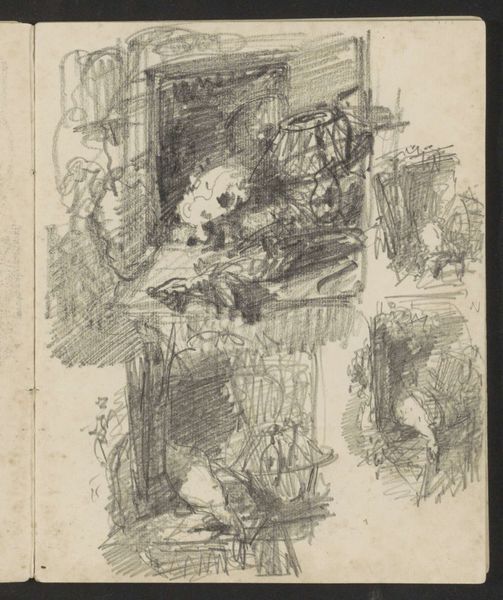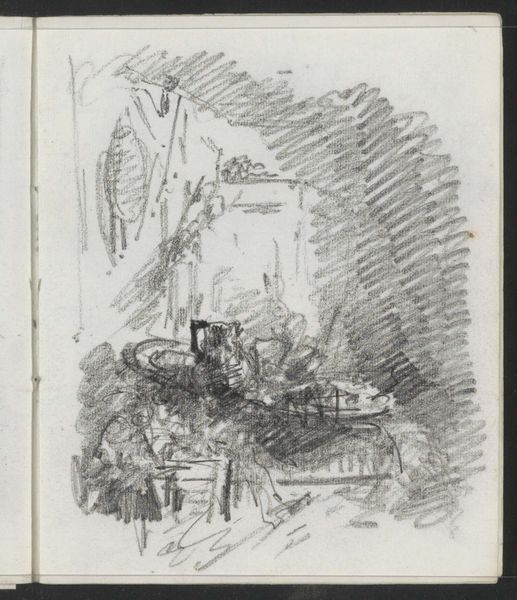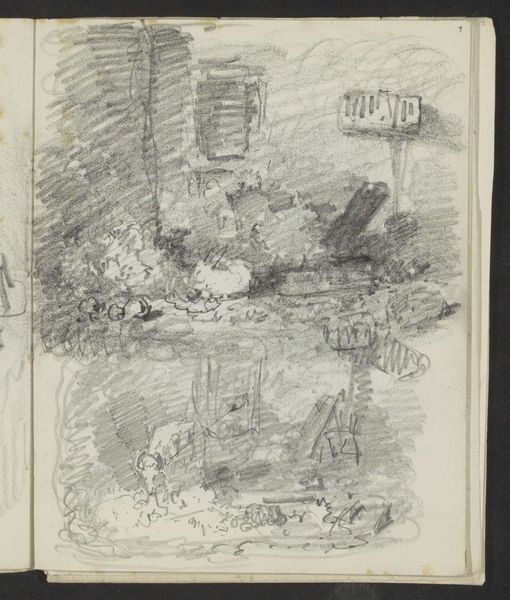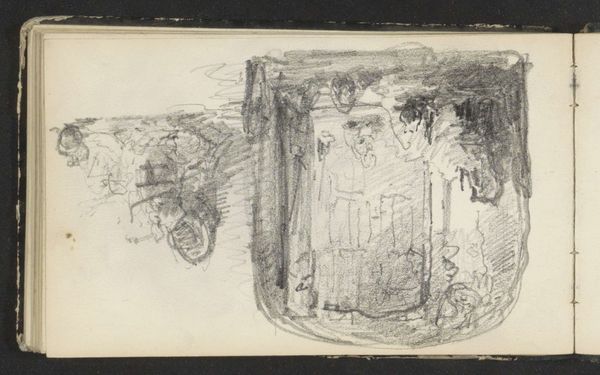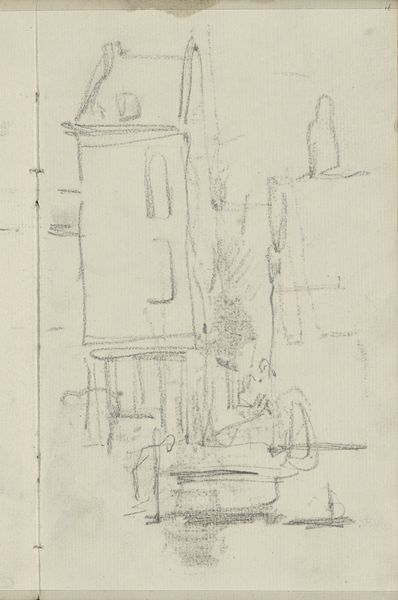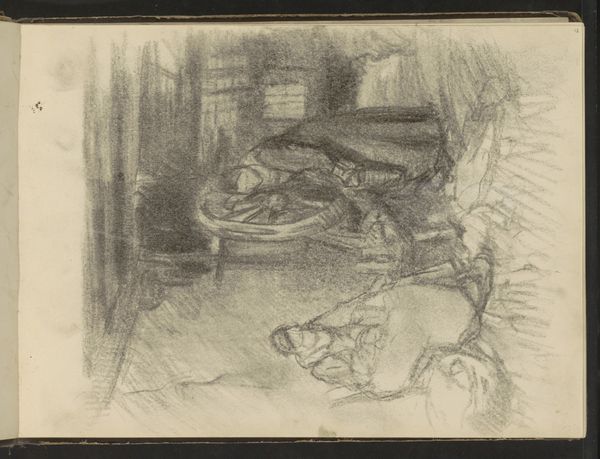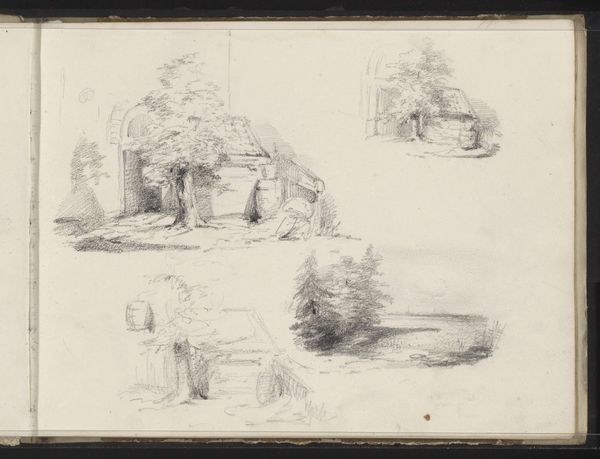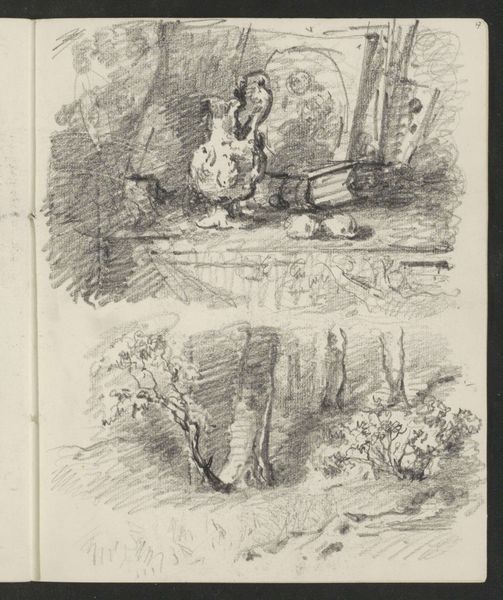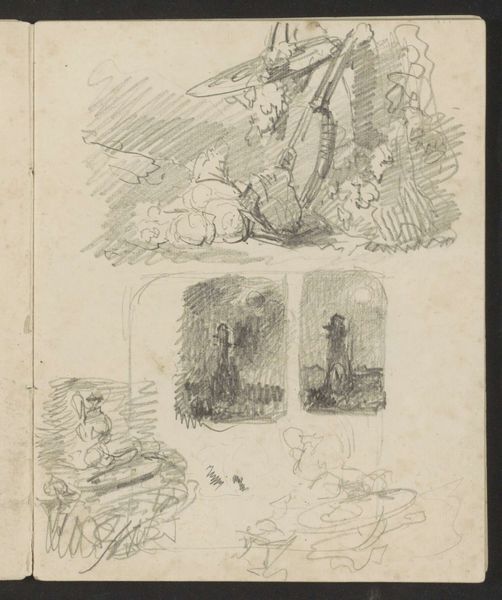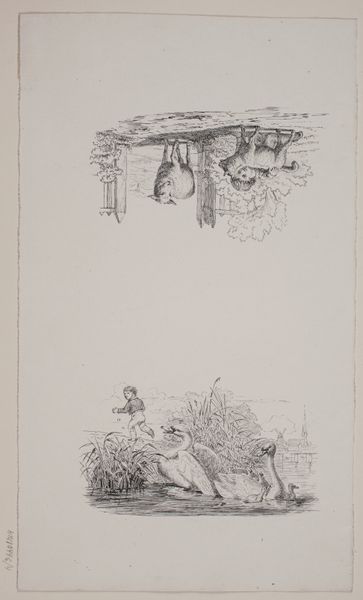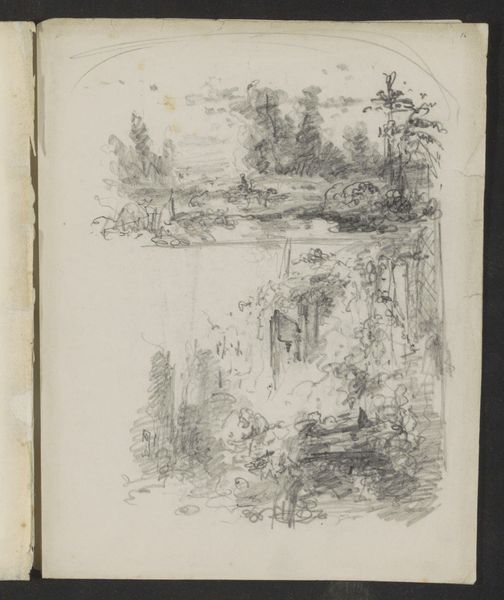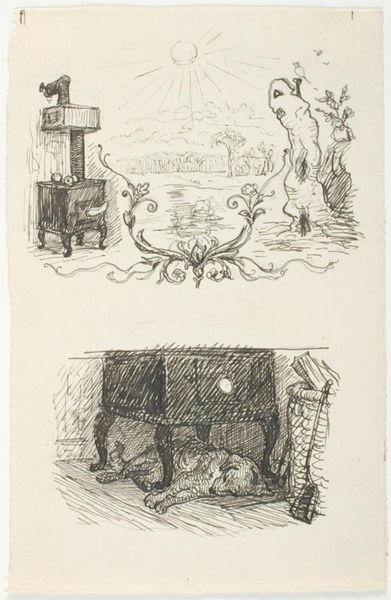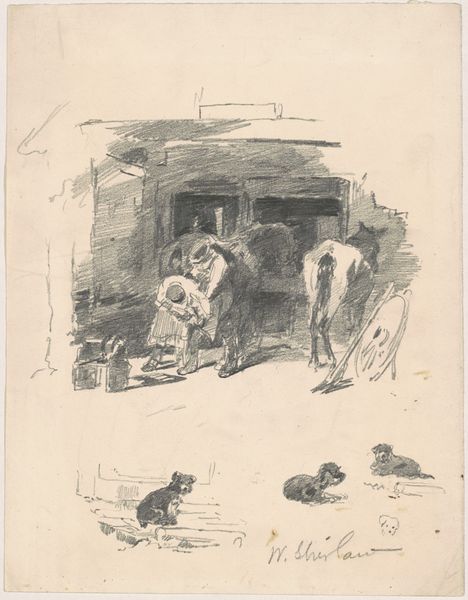
drawing, dry-media, pencil
#
drawing
#
quirky sketch
#
pen sketch
#
sketch book
#
dry-media
#
personal sketchbook
#
sketchwork
#
pen-ink sketch
#
pencil
#
pen work
#
sketchbook drawing
#
storyboard and sketchbook work
#
academic-art
#
sketchbook art
#
realism
Copyright: Rijks Museum: Open Domain
Curator: Welcome. Before us is "Stillevens met verschillende objecten, zoals een kan en boek," a drawing completed around 1858 by Maria Vos. It currently resides here at the Rijksmuseum. Editor: My initial impression is the intimacy of a personal sketchbook. The pencil rendering has a lovely, almost ephemeral quality. You can almost feel the artist's hand moving across the paper. Curator: Exactly. It's quite evocative, and the nature of a sketchbook allows for the combination of a more traditional fine art practice within a setting usually seen as separate, and decidedly less ‘fine’. Vos here is bridging these artistic worlds. The sketch gives insight into the academic world that she was surely involved in, as academic style was fashionable in art education in this period. Editor: Agreed, but it's important to examine this academic label. Look at the casualness in the sketch work, the multiple studies, and quick, economic use of materials; pencil and paper, everyday items in the domestic sphere! She transforms commonplace tools and ordinary subjects, like that little pitcher, into vehicles of artistic expression. Was the point here to just be ‘academic’? Curator: I think the piece challenges that narrow definition of what “academic” is supposed to mean. As a female artist working in the 19th century, access to formal artistic training would have presented a different set of social challenges, and often women who drew and painted used their practice to participate in visual culture through an emphasis on subjects considered "suitable," like still life paintings for example. But what do we make of the book? Is this object, too, being represented within a traditionally feminized space of leisure and education, or is there more we can understand from this drawing? Editor: The book! You know, it underscores the relationship between knowledge, craft, and lived experience. The labor involved, both intellectual and material, seems equally important to the artist. It speaks to the democratization of knowledge through material means. Curator: A democratizing sentiment for a time where so many people were barred from literacy? It asks a lot of the context. Ultimately, the drawing provides a tangible connection to artistic exploration within a moment of history still relevant today. Editor: Indeed, and thinking about artmaking, everyday life, and how this work gives both tangible shape really broadens how we look at art history, doesn’t it?
Comments
No comments
Be the first to comment and join the conversation on the ultimate creative platform.
